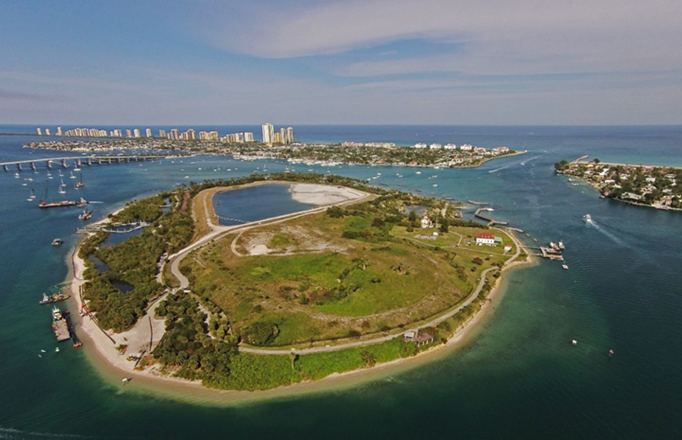
Coastal islands protect the mainland from storm surge and shoreline erosion and provide habitat for a variety of wildlife, making them an attractive engineering option for restoration projects. However, there is uncertainty about how to build them to achieve these benefits and complement the environment.
A new publication from the U.S. Army Corps of Engineers Engineering With Nature® (EWN®) Program, in collaboration with NCCOS, the USACE Engineer Research and Development Center, and four USACE districts, documents six successful nearshore island restoration and construction case studies that used natural and nature-based materials.
“Island case studies that include information about monitoring, construction, adaptive management, and lessons learned can fill these knowledge gaps,” explains Jeff King, deputy lead for the EWN Program. “Making this information available to practitioners will advance the use of dredged sediment to construct islands and other natural infrastructure projects, thereby increasing multi-purpose benefits.”
NCCOS collaborated on two island case studies to monitor, document, and evaluate post-restoration performance of Mordecai Island, Barnegat Bay, New Jersey, and Swan Island, Chesapeake Bay, Maryland. Other case studies document rapid seagrass colonization on Snook Islands in Lake Worth, Florida; recreational and habitat benefits of reef breakwaters on Peanut Island in Florida; successful colonial seabird nesting on Baptiste Collette Bayou Bird Islands in Louisiana; and a passive “sand motor” sediment placement approach in Atchafalaya River, Louisiana, to create and extend Horseshoe Bend Island over the last two decades.
The case studies demonstrate the multiple socioeconomic and habitat benefits of combining dredged sediment placement with island creation and restoration. The approaches highlighted are transferable to other dredging and island projects.
NCCOS supports monitoring and research on the beneficial use of dredged sediments to keep sediment in the system, reduce coastal storm and flood impacts, and increase wildlife habitat and recreation opportunities.

